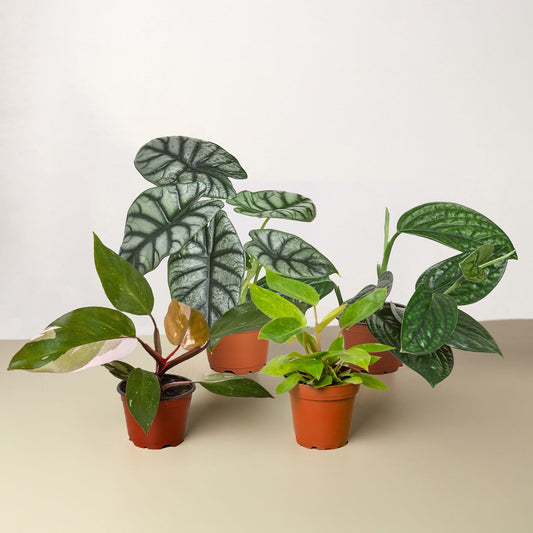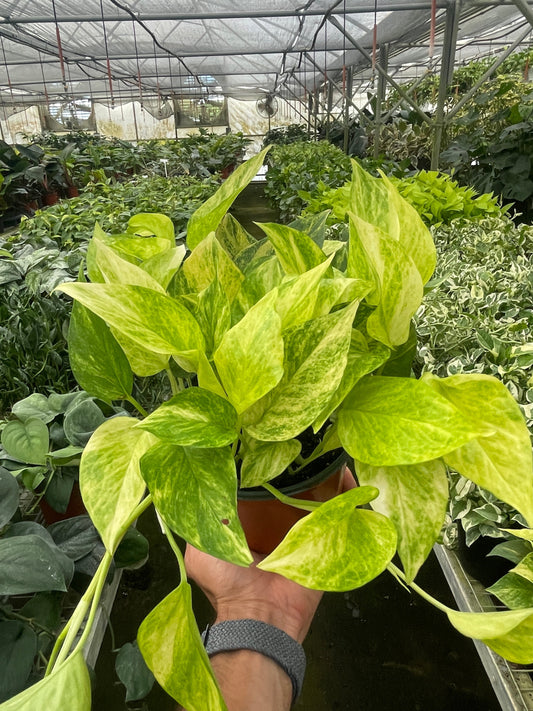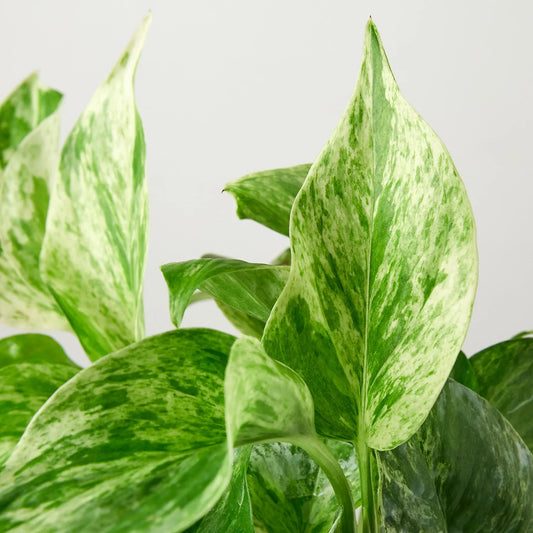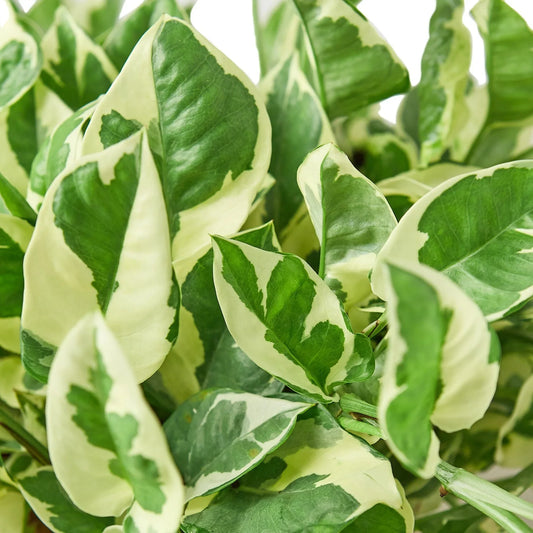Do Jade Plants Bloom? A Guide to Jade Plant Flowers
Cafe Planta Team
Jade plants, with their thick, fleshy leaves and charming bonsai-like appearance, are a favorite among plant lovers. But did you know that these hardy succulents can also bloom? That's right! While it’s not an everyday occurrence, jade plants do produce flowers under the right conditions, and they’re a sight to behold.
In this article, we’ll explore the fascinating world of jade plant flowers. From understanding what triggers these blooms to practical tips on encouraging your jade plant to flower, you'll find everything you need to know to care for these beautiful plants.
Understanding Jade Plant Flowers
Before getting into the specifics of how to make your jade plant bloom, let's take a moment to understand what these flowers are like. Jade plant flowers are small, delicate, and star-shaped, typically white or pale pink. They grow in clusters and have a subtle, sweet fragrance that can fill a room.
Jade plants (Crassula ovata) are native to South Africa and Mozambique and belong to the succulent family. Like many succulents, jade plants store water in their leaves, which makes them remarkably drought-resistant. This characteristic also influences their flowering habits. In their natural habitat, jade plants bloom during winter, after experiencing a period of dormancy.
Interestingly, jade plants need specific conditions to bloom, which often mimic their natural environment. This includes a certain amount of light, cooler temperatures, and a dry period. But don’t worry, you don’t have to move to South Africa to enjoy jade plant flowers! With a bit of care and attention, you can create the right conditions at home.
What Triggers Jade Plants to Bloom?
So, what exactly triggers a jade plant to bloom? Well, it's a combination of factors, and understanding these can help you in your quest to see flowers. Let's break it down:
- Light: Jade plants need plenty of bright, indirect sunlight to thrive. In their native habitat, they receive intense light during the day, which helps them store energy for flowering.
- Temperature: Cool temperatures are key to triggering blooms. In the wild, jade plants experience cooler nights during winter, which encourages flowering. At home, aim for temperatures between 55°F and 60°F (13°C and 16°C) at night.
- Water: A dry spell can also promote blooming. During fall and winter, reduce watering to mimic the plant's natural dry period. This stress can stimulate the plant to produce flowers.
- Age: Mature jade plants are more likely to bloom. Typically, a jade plant needs to be at least three to four years old before it can flower.
By recreating these conditions, you can increase the chances of your jade plant flowering. Remember, patience is key, as it may take several years for a jade plant to bloom, even under ideal conditions.
Creating the Right Environment for Blooming
Now that you know what triggers a jade plant to bloom, let’s talk about how to create the perfect environment for your plant. Here are some practical tips:
1. Sunlight
Place your jade plant in a location where it receives ample sunlight. A south-facing window is ideal, as it provides bright, indirect light. If you live in a region with limited sunlight during winter, consider supplementing with a grow light.
2. Temperature
During fall and winter, try to maintain cooler temperatures, especially at night. If possible, move your jade plant to a cooler room or near a window that’s slightly ajar. Just be cautious of drafts, as they can damage the plant.
3. Watering
Reduce watering in the fall to induce a dry period. Only water when the soil is completely dry. This mimics the plant's natural environment and can help stimulate blooming. Remember, overwatering is a common mistake and can lead to root rot.
By following these steps, you can create the right conditions for your jade plant to bloom. It might take some time, but the reward of seeing those beautiful flowers is well worth the effort!
Potting and Soil Considerations
Proper potting and soil are crucial for a healthy jade plant. To encourage blooming, you’ll want to ensure your plant is well-potted and in the right soil. Here’s what to keep in mind:
1. Potting
When selecting a pot, choose one with drainage holes to prevent water from pooling. A clay or terracotta pot is a good option, as it allows the soil to dry out more quickly. This is important for succulents, as they don’t like to sit in wet soil.
2. Soil
Jade plants prefer well-draining soil. A cactus or succulent mix works well, as it provides the drainage needed to keep the roots healthy. You can also create your own mix by combining regular potting soil with sand or perlite.
Repotting should be done every two to three years or when the plant outgrows its pot. This not only gives your jade plant fresh soil but also allows you to check the roots for any signs of rot or disease.
Fertilizing Your Jade Plant
Fertilizing can give your jade plant a nutrient boost, which may encourage blooming. However, it’s essential to do it right, as too much fertilizer can harm the plant.
1. When to Fertilize
Fertilize your jade plant during the growing season, which is spring and summer. This is when the plant is actively growing and can make the most use of the nutrients.
2. Type of Fertilizer
Choose a balanced, water-soluble fertilizer. A 10-10-10 or 20-20-20 formula works well. Dilute the fertilizer to half strength, as succulents are sensitive to excess nutrients.
3. How to Fertilize
Apply the diluted fertilizer once a month during the growing season. Avoid fertilizing in fall and winter, as the plant is in a dormant phase and doesn’t require additional nutrients.
By fertilizing correctly, you can support your jade plant’s growth and increase the likelihood of flowering.
Pruning and Maintenance
Regular pruning and maintenance are important for keeping your jade plant healthy and encouraging blooms. Here’s how to do it:
1. Pruning
Prune your jade plant to remove dead or damaged leaves and branches. This not only improves the plant’s appearance but also directs energy toward new growth and flowering.
Use clean, sharp scissors or pruning shears to make clean cuts. Prune in the spring or summer when the plant is actively growing.
2. Cleaning
Dust can accumulate on the leaves of your jade plant, blocking sunlight. Gently wipe the leaves with a damp cloth to keep them clean and ensure they can photosynthesize efficiently.
3. Checking for Pests
Regularly inspect your jade plant for pests such as mealybugs and spider mites. These pests can damage the plant and hinder blooming. If you notice any, treat them promptly with insecticidal soap or neem oil.
By keeping your jade plant well-maintained, you’ll create optimal conditions for it to thrive and potentially bloom.
Jade Plant Varieties and Their Blooming Habits
Did you know there are several varieties of jade plants, each with unique characteristics? While most jade plants have similar blooming habits, some varieties might surprise you with their distinct traits.
1. Crassula ovata
This is the most common jade plant variety. It’s known for its classic oval-shaped leaves and is the type most likely to bloom under the right conditions.
2. Crassula ovata 'Hummel's Sunset'
Known for its stunning yellow-tipped leaves, this variety can also bloom. However, its vibrant foliage often steals the show!
3. Crassula ovata 'Gollum'
Also called the "Shrek Plant" due to its tubular leaves, this variety can bloom, but its flowers are often smaller and less frequent.
Understanding the different varieties can help you tailor your care to encourage blooming. While all jade plants can flower, some might require a bit more patience and care.
Common Challenges and Solutions
Even with the best intentions, you might face some challenges in getting your jade plant to bloom. Here are a few common issues and how to tackle them:
1. Lack of Blooms
If your jade plant isn’t blooming, it could be due to insufficient light, improper watering, or unsuitable temperatures. Reevaluate your plant’s environment and make adjustments as needed.
2. Yellowing Leaves
Overwatering is a common cause of yellowing leaves. Ensure your jade plant is in well-draining soil and only water when the soil is dry.
3. Pests
Pests can damage your jade plant and prevent blooming. Regularly inspect your plant and treat any infestations promptly.
By addressing these challenges, you can keep your jade plant healthy and increase the chances of it blooming.
Patience and Persistence Pay Off
Encouraging a jade plant to bloom takes time and patience. Even if you don’t see flowers right away, know that your efforts are helping your plant thrive. Keep providing the right care, and eventually, your jade plant may reward you with its lovely blooms.
Remember, the journey of caring for a jade plant is rewarding in itself. Enjoy the process, and don’t be discouraged if it takes a while for your plant to flower. With persistence, you’ll eventually see those beautiful blooms.
Final Thoughts
Jade plants can bloom, but it requires the right conditions and a bit of patience. By providing proper care, including adequate light, suitable temperatures, and the right watering routine, you can increase the chances of seeing those delightful flowers.
At Cafe Planta, we’re passionate about helping you succeed in your plant care journey. Whether it’s choosing the right houseplant or finding the perfect plant care accessories, we’re here to help. If you have any questions, feel free to email us, send us a DM on Instagram, or visit our shop. We believe in the power of plants to bring joy and inspiration to your home. Let's grow together!



















